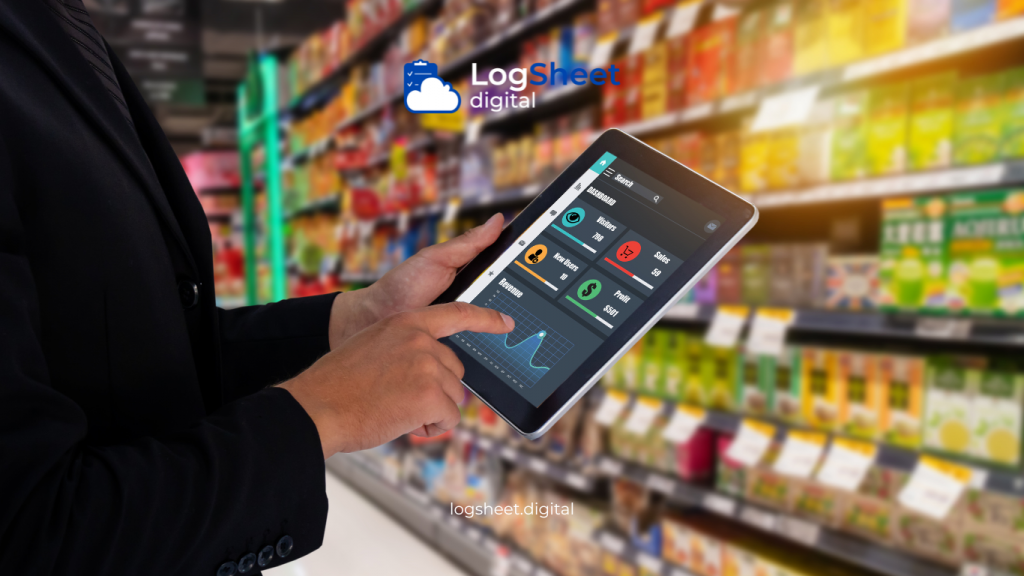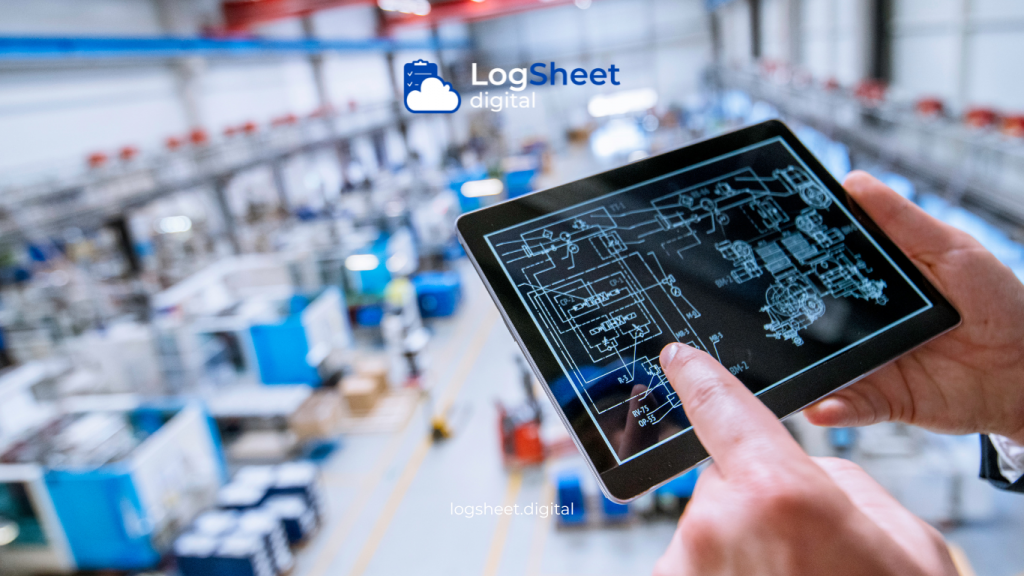In the evolving world of logistics and distribution, efficiency and timeliness are key to success. Distribution centers, as crucial points in the supply chain, must ensure that all daily activities run smoothly and without interruptions. One important tool in achieving this goal is the logsheets or daily activity record. However, with the increasing volume of data and the need for faster processing, digital logsheets innovations have become an effective solution. This article will discuss how digital logsheets innovations play a critical role in daily activity monitoring in distribution centers.
Challenges in Daily Activity Monitoring in Distribution Centers

Read More: Enhancing Industrial Efficiency with Digital Logbooks
Distribution centers are the heart of logistics operations where goods are collected, sorted, and distributed to various locations. Monitoring daily activities in distribution centers faces several challenges, including:
- High Data Volume: Every day, thousands of transactions and activities occur at distribution centers. Manually recording and managing this data requires a lot of time and can lead to errors.
- Timeliness: In logistics, time is money. Delays in distribution processes can cause shipment delays, revenue loss, and customer dissatisfaction.
- Coordination Between Teams: Distribution centers involve many teams working simultaneously, such as receiving, storage, and shipping teams. Effective coordination among these teams is crucial for smooth operations.
- Real-Time Reporting Needs: Distribution center management requires access to real-time data to make quick and accurate decisions. Delayed reporting can lead to bigger issues later.
What is a Digital Logsheets?

Read More: Operational Efficiency: Implementing Digital Logbooks
A digital logbook is a modern version of the traditional logbook used to record daily activities in distribution centers. Instead of using paper, digital logbooks use software and hardware to record, store, and analyze data electronically. Key features of digital logbooks include:
- Automatic Recording: Data is recorded automatically through sensors, barcodes, or RFID, reducing the need for manual input.
- Real-Time Access: Data can be accessed in real-time by management, allowing for faster monitoring and reporting.
- Integration with Other Systems: Digital logbooks can be integrated with Warehouse Management Systems (WMS), Transportation Management Systems (TMS), and Enterprise Resource Planning (ERP) systems to improve operational efficiency.
- Data Security: Data is stored digitally with strong security protocols, ensuring that sensitive information is protected from unauthorized access.
Benefits of Digital Logsheets Innovations in Distribution Centers

Read More: Addressing the Challenges of Implementing Digital Logbooks in Logistics Environments
Implementing digital logbooks in distribution centers brings various benefits that can enhance efficiency and productivity. Some of the main benefits include:
1. Increased Operational Efficiency
With digital logbooks, data recording becomes faster and more accurate. Automated systems reduce human errors that often occur with manual recording. Additionally, integration with other systems allows for smoother information flow between departments, reducing wait times and improving overall operational efficiency.
2. Real-Time Monitoring
One of the major advantages of digital logbooks is the ability to monitor activities in real-time. Distribution center managers can view current operational status, identify potential issues, and take corrective actions immediately. Real-time monitoring also allows for quick adjustments to changes in demand or market conditions.
3. Faster and More Accurate Decision-Making
With data available in real-time and in an easily accessible format, managers can make faster and more informed decisions. This is crucial in the dynamic logistics environment, where timely decisions can make the difference between success and failure.
4. Reduced Operational Costs
Digital logbook implementation can lower operational costs by reducing the need for paper, ink, and physical storage space for documents. Additionally, by minimizing human errors and enhancing efficiency, costs associated with error correction and downtime can be reduced.
5. Increased Data Accuracy
Data recorded digitally tends to be more accurate compared to manual recording. Automated systems ensure that the data entered is correct and consistent, reducing the risk of errors that can impact distribution center operations.
6. Improved Compliance and Reporting
Digital logbooks facilitate tracking and reporting, which is essential for compliance with industry regulations and audits. All recorded data can be easily accessed and analyzed, ensuring that distribution centers meet the required standards.
Case Study: Implementation of Digital Logsheets in a Distribution Center

Read More: Digital Logbooks: A Revolution in Monitoring and Maintenance of Safety Equipment
To illustrate, let’s look at a case study of implementing digital logbooks in a large distribution center. This distribution center faced issues with slow and error-prone manual recording. After switching to digital logbooks, they saw a significant improvement in operational efficiency and a reduction in recording errors.
Results of Implementation:
- Reduced Recording Time: The time required to record daily activities was reduced by up to 50%, allowing the team to focus on more critical tasks.
- Increased Accuracy: Recording errors decreased drastically, from about 10% to less than 1%.
- Faster Decision-Making: With real-time data, managers could make strategic decisions more quickly, positively impacting overall distribution operations.
- Customer Satisfaction: Due to increased efficiency and reduced errors, the distribution center could better meet customer demands, improving overall customer satisfaction.
Challenges in Implementing Digital Logsheets

Read More: Enhancing Industry Security through Digital Logbooks for Safety Equipment
While digital logbooks offer many benefits, their implementation also faces several challenges, including:
1. High Initial Costs
Adopting digital logbooks requires a significant initial investment, including costs for software, hardware, and employee training. However, this investment is usually recouped in the long term through operational cost savings and efficiency improvements.
2. Need for Employee Training
Transitioning from manual to digital systems requires training employees to effectively use the new system. This training demands time and resources but is essential for successful implementation.
3. Integration with Existing Systems
Digital logbooks must be integrated with other management systems in the distribution center, such as WMS, TMS, and ERP. This integration can be complex and time-consuming, especially if existing systems are outdated or incompatible with new technology.
4. Resistance to Change
As with all technological innovations, resistance to change is a common challenge. Some employees may be uncomfortable with new technology and prefer old methods. Overcoming this resistance requires effective communication and support from top management.
Conclusion

Read More: Advancements Towards Industry 4.0: Transformation with Digital Logbooks in Production
Digital logbook innovations have significantly transformed how distribution centers manage and monitor their daily activities. By addressing the challenges of manual recording, digital logbooks offer a more efficient, accurate, and responsive solution. Although there are challenges in implementation, the long-term benefits provided by digital logbooks far outweigh them, making it a valuable investment for distribution centers looking to stay competitive in an increasingly demanding market. As technology continues to evolve, the future of activity monitoring in distribution centers will increasingly rely on digital innovations like digital logbooks.






leave your comments